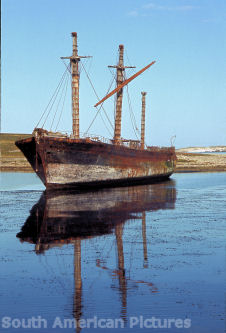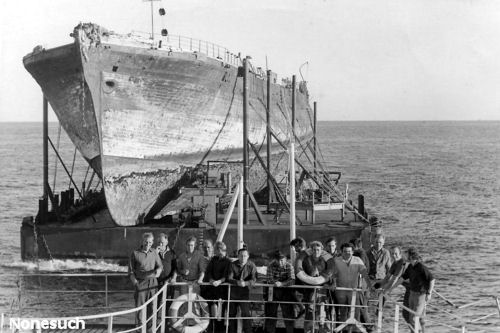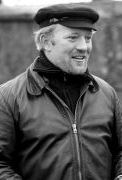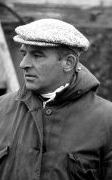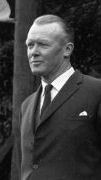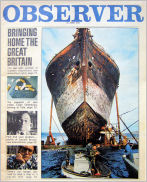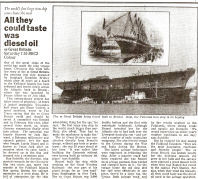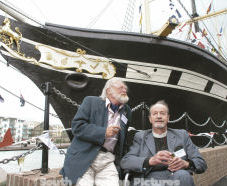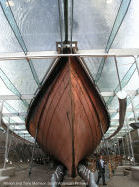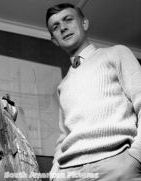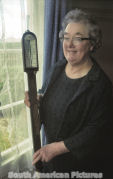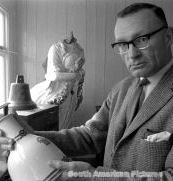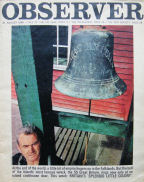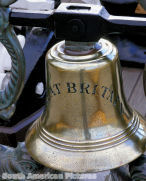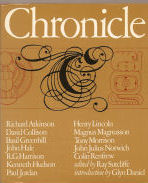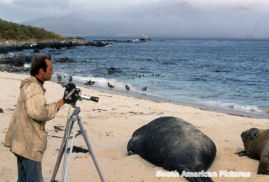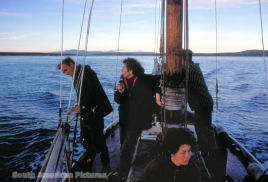The
Salvage of the SS Great Britain | ||||||||||||||
Saving
the maritime masterpiece of Isambard Kingdom Brunel - 1970 | ||||||||||||||
| ||||||||||||||
A rusting hulk. At the beginning of 1970 the Victorian Steamship Great Britain lay beached in the Falkland Islands / Islas Malvinas. The old ship, already largely decayed, was taken there in 1937 after many years spent as a floating coal and wool store in nearby Stanley harbour. By May 1970 after an epic salvage operation by German and British teams the hull, strapped to a giant pontoon was en route to Avonmouth the modern port for Bristol. The tow of 6,800 miles / 10,900kms was made largely by the tug Varius ll from Hamburg which had also served as a base for the salvage operation. The flotilla stopped briefly in Monetevideo, Uruguay and then again in Barry Dock, South Wales where tugs from Bristol took over. The picture on the right was taken in the South Atlantic by a member of the German team and processed on the tug during the tow. It shows many of the experts involved with the salvage operation as well as Ray Sutcliffe, a producer for Chronicle - the BBC classic Archaeology and History television programme, and Tony Morrison. They are on the right. Tony who was based in South America with his wife Marion was an independent specialist film-maker also working for the BBC. Marion who was reporting for the Observer, a London newspaper is not in the group as women were barred from the long tow. | ||||||||||||||
The key decision makers in 1970 | ||||||||||||||
| ||||||||||||||
| ||||||||||||||
Behind these key figures Dozens of other people were involved in making the salvage not just possible but highly successful - they are not forgotten and will be recorded in future pages. | ||||||||||||||
| ||||||||||||||
Back in Bristol Now forty years on since the salvage the SS Great Britain is almost fully restored thanks to many donations and grants. The ' Britain ' sits in the Great Western Dock once called the 'Wapping Dry Dock', the place where she was built.The lower half of the hull is set below a glass cover and is specially de-humidified to prevent further decay of the wrought iron plates. A study centre and library are being constructed alongside. The ship has become a major tourist attraction and educational resource. In 2006 it received the prestigious Gulbenkian Museum of the Year award. | ||||||||||||||
| ||||||||||||||
| 'The Incredible Journey' This project of the Great Britain Trust was launched on 17th July 2009. Its aim is to document the complete history of the salvage in time for July 19th 2010 exactly forty years after the ship was inched back into the dock where she was launched. A call has gone out for personal memories of the epic salvage and the 'Britain's' memorable return to Bristol. Tony and Marion have contributed recordings made with Ray and photographs giving a day by day history of the salvage operation. Their personal reminiscences can be heard on the SS Great Britain website - Historic Collections. | ||||||||||||||
| ||||||||||||||
| Tony Morrison is a graduate of the University of Bristol and has made films for the BBC Natural History Unit based in Bristol. He and his wife Marion spent two summer seasons in the Falkland Islands / Islas Malvinas and while making a natural history film were asked to begin work on the saga of the SS Great Britain. Marion was writing for British papers including the Guardian, Economist and Observer. Ray Sutcliffe is now an eminent maritime historian with an interest in historic ships across the world. Dr. Ewan Corlett the naval architect who recognised the importance of the Great Britain and stimulated the salvage, died in 2005. See Ewan Corlett - Champion of the Great Britain. | ||||||||||||||
| ||||||||||||||
